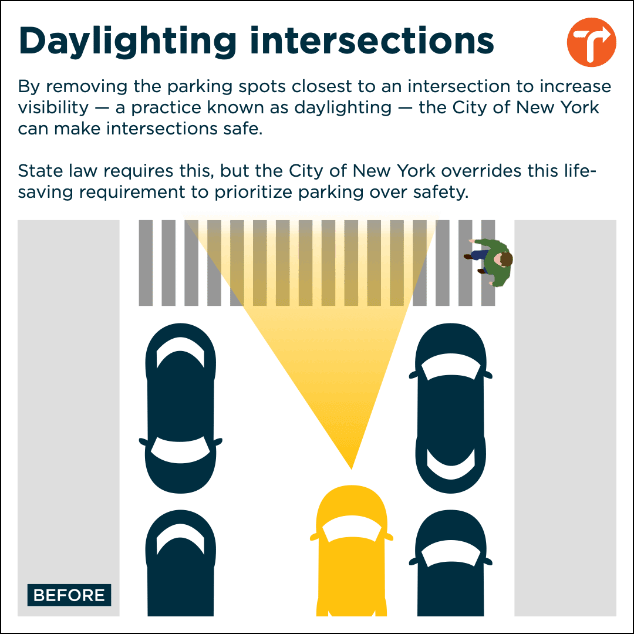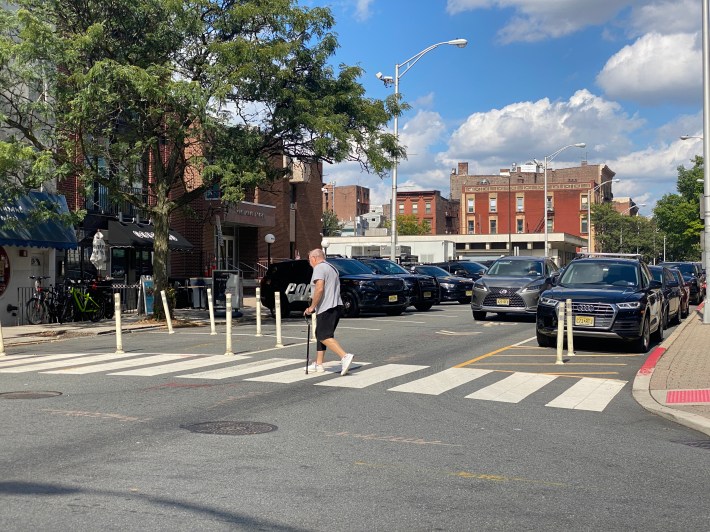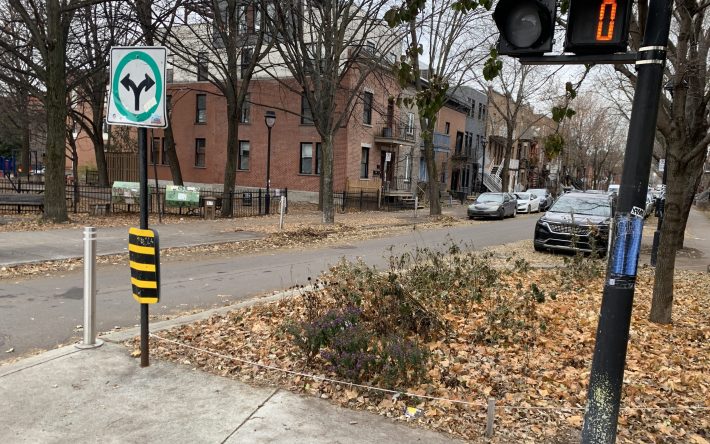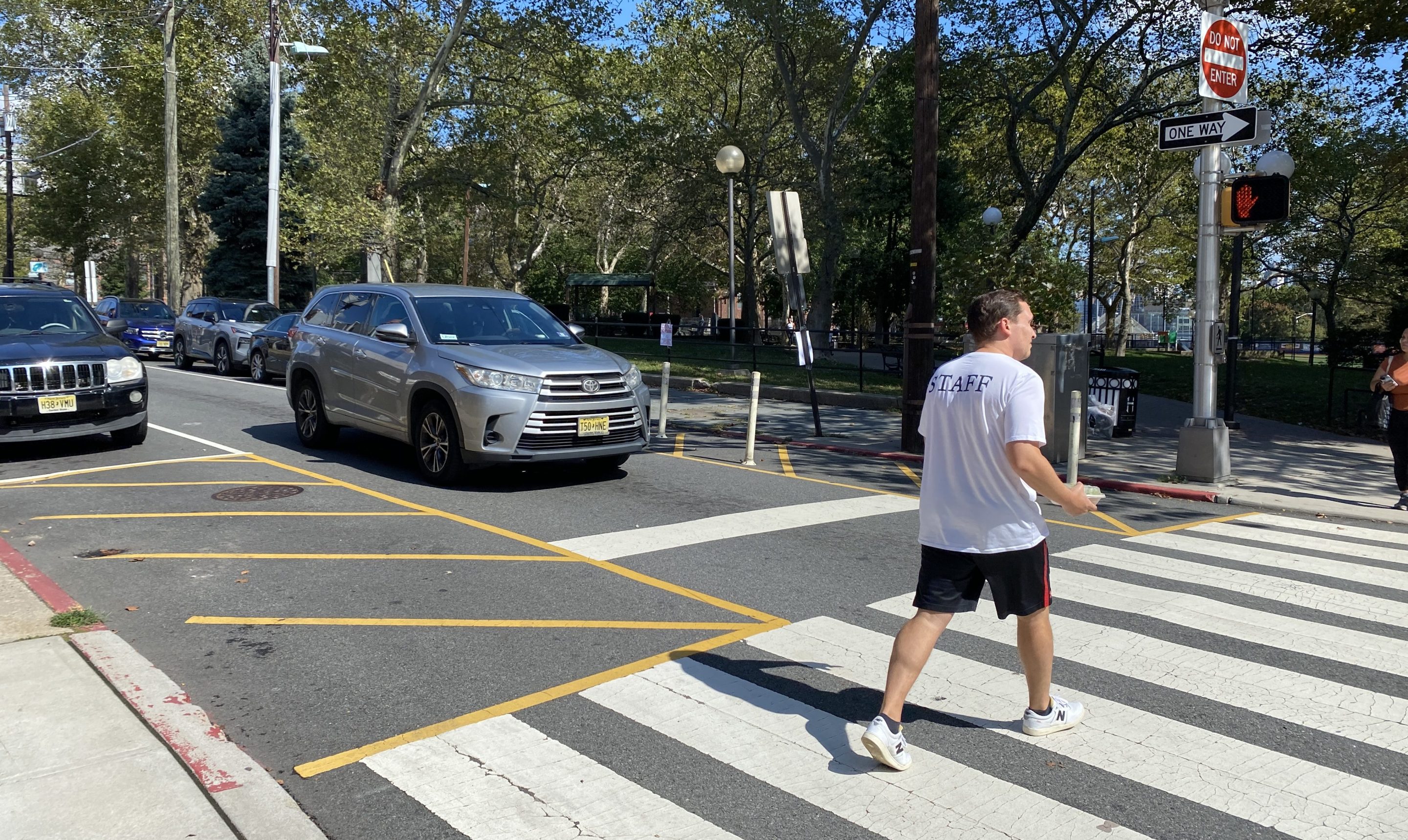It's a Gale force flip-flop.
A Manhattan lawmaker has pulled her support from a bill to ban parking within 20 feet of street corners — a design for better visibility also known as daylighting — after city officials lobbied in the media and behind the scenes to peel off politicians from the widely supported legislation.
Upper West Side Council Member Gale Brewer told Streetsblog that Department of Transportation officials told her the proposed law would remove 13,000 parking spaces per district — which she called "too many." She added that she was also compelled to abandon a long-sought safety measure after DOT Commissioner Ydanis Rodriguez penned an opinion piece in the Daily News on Monday that argued that the well-established street safety design actually "adds danger."

The 13,000 projected parking removal figure that DOT relayed to Brewer this week was double the 6,500 average spots per Council District that transportation officials previously estimated under oath at at a Council hearing on the bill in April.
So instead of supporting universal daylighting, Brewer is now saying that the city should restrict parking at corners on a case-by-case basis, such as where there's been a crash or a fatality, a position that mimics that of the DOT.
"Definitely need some of it," Brewer said of daylighting. "Where you’ve had some accidents, or someone gets killed."
When told that Brewer admitted she was frightened by DOT's parking space bogeyman, StreetsPAC Executive Director Eric McClure said her flip flop was "deeply, deeply disappointing."
"Daylighting is proven to improve safety, and no parking space is worth a serious injury, or worse," said McClure, whose political action committee has endorsed Brewer in the past. "And we’re talking about a Council District that’s as well served by alternatives to driving as any place in the western hemisphere. I sincerely hope Council Member Brewer rethinks her position."
The legislation, Intro 1138 by Council Member Julie Won (D-Queens), was drafted in response to a grass-roots push by advocates across the city following the high-profile crash deaths of several children at intersections with poor visibility. The bill finally gained a majority of 26 Council co-sponsors in July, but advocates last week relaunched a push in the hopes of a two-thirds majority in order to clear an all-but-guaranteed veto by soon-to-be-former Mayor Adams.
DOT has campaigned against the proposed law, arguing out of both sides of its portfolio: First, the agency says that daylighting without "hardening" — i.e. by putting concrete or other street furniture at intersections — is dangerous. Then the agency turned around and said that the hardening that would make daylighting safe is too expensive, throwing up an estimate of $3 billion based on an unverifiable $10,000 per intersection figure.
The agency also said proper daylighting will require the repurposing of 300,000 car spots citywide, which many advocates see as a goal in itself by reducing car use.
Advocates have slammed DOT's argument as a desperate "scare tactic," but it appears to have paid off with Brewer's flip on the bill.
Twenty-three of the city's 51 (usually car-friendly) community boards endorsed the move – including the boards in Brewer's district. Daylighting boosters are urging her to reconsider.
"Council Member Brewer has a history of thoughtfully incorporating local input. All of her community boards have passed resolutions in support of universal daylighting, showing a clear community consensus," said Jackson Chabot, director of advocacy and organizing at Open Plans (which shares a parent organization with Streetsblog). "We hope she’ll ... stand with her constituents and on the side of safety — not to cave to baseless, misleading arguments."
Daylighting has been a widespread practice across the nation dating back to the earliest days of the automobile in the 1920s. And it's the law across more than 40 states, including New York. However, state law exempts New York City, forcing New Yorkers to peek out from behind rows of parked vehicles to see if it's safe to walk. Like this:

Stoking parking fears
Rodriguez's Daily News op-ed trotted out DOT's much-repeated mantra that daylighting without hardening could allow drivers to make quicker and more careless turns, projecting a whopping 15,000 additional traffic injuries if the bill were to pass, based on a flawed study DOT published early this year.
"While these intersections gained additional visibility that should have made it easier for drivers and pedestrians to see one another, the data suggests that it also changed driver behavior in a way that reduced safety," Rodriguez said.
The key word there is "suggests," since officials who actually worked on the report have admitted that the data was less than conclusive.
The agency found that among 7,500 intersections there was a higher crash injury rate at crossings that banned parking either via a hydrant or a bus stop compared to intersections where cars parked right up at the crosswalk.

That conclusion came with major caveats: DOT researchers couldn't say for sure whether the crashes happened at the corner with the daylighting, nor whether a car was illegally parked in the daylit spot at the time.
Other transportation experts quickly questioned DOT's implication at the time that a corner was safer when a multi-ton vehicle blocks sight lines. Even the people behind the controversial study hedged when pressed by Streetsblog.
"It doesn’t mean that the daylighting caused the injury. We’re not saying we can completely tie the causation," DOT's Deputy Commissioner for Transportation Planning and Management Eric Beaton told Streetsblog after the study's release in January.
But the damage was done, and conservative politicians and outlets like the New York Post continue to capitalize on DOT's doomsaying, using the flawed report to mudsling at the proposed policy change.
The supposedly pro-safety group NYC E-Vehicle Safety Alliance also joined the anti-daylighting chorus this month, sending an email blast out urging its supporters to call their elected officials and demand they stop the "horrible" daylighting bill.
EVSA, which bills itself as elevating "victims and potential victims … of rogue e-vehicle riders," wrote that the legislation removes parking "so that 'e bikers can see better' and creates space for them to cut corners and plow into pedestrians."
It went on to pan the large rocks DOT deploys as eyesores that allow people to — gasp — "hang out."
"Have you seen the HUGE hideous looking boulders at some of the intersections now, that take up three parking spaces where people hang out, sitting/lying on top of boulders dropping trash and leave their bikes," EVSA's Sept. 15 email read.
Hypocrisy at DOT
DOT says universal daylighting is unsafe, yet it often requires it ... except when cars are involved.
For example, the agency specified in its rulemaking for outdoor dining that any roadway structures must be at least 20 feet from a crosswalk.
And street trees have to be even further back at 35 feet, according to DOT's Street Design Manual.
In a sense, DOT is putting tens of thousands of parking spaces above mountains of evidence near and far that show daylighting's effectiveness.
Just across the Hudson River in Hoboken, officials have aggressively rolled out daylighting and have not logged a single traffic death since 2017.
Pedestrians struck by drivers dropped by 35 percent, cyclists by 11 percent, and crashes dropped by 27 percent overall in the Mile-Square City, where traffic engineers quickly deployed low-cost plastic sticks and paint to implement the policy.

Similarly, California adopted statewide universal daylighting at the beginning of this year, following a successful pilot in San Francisco, which logged 14 percent fewer collisions at daylit crossings in its Tenderloin district.
The sky has not fallen in the Golden State, which has seen a 2.4 percent decrease in traffic fatalities for the first half of this year, according to estimates by the National Highway Traffic Safety Administration.
In Montreal, researchers found that if cars were parked within five meters of a crosswalk (a bit over 16 feet), the number of injured pedestrians "significantly increased." (That data covered 1999 to 2008, when cars were much smaller than they are now.)

In Hong Kong, another dense city, a study of nearly 900 intersections between 2010 and 2012 found that the presence of a car at a crosswalk increased the risk of pedestrian crashes by 20 percent.
In Lima, a paper on pedestrian injuries from 2014 also concluded that "parked vehicles at a crossing area was associated with increased risk of pedestrian collision."
Council Member Won declined to comment on Brewer's departure. But her office shared a letter to DOT from earlier this month [PDF] in which Won questioned DOT's methodology and cited several of these international studies.
"I recommend that DOT retract or publish an addendum to its report that clarifies that a more rigorous study should be conducted before conclusions can be inferred from the existing data," wrote Won.
DOT declined to comment.






